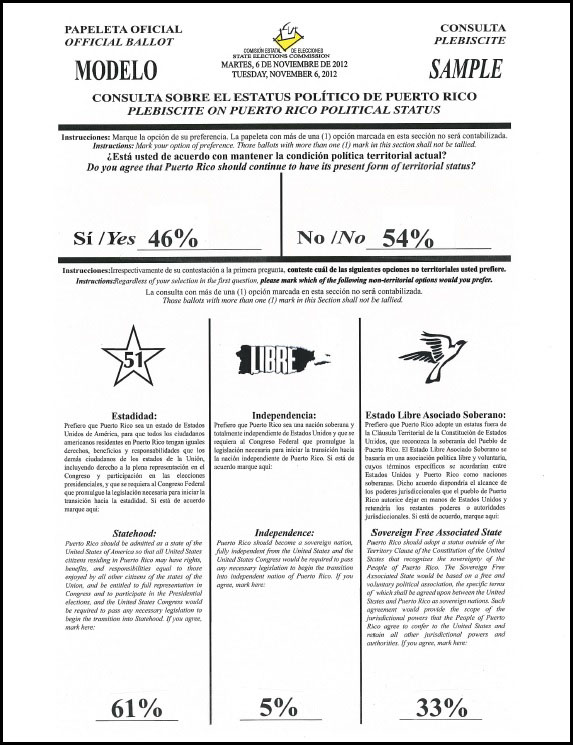The 2024 referendum will be different from the previous votes for one primary reason: the current territorial status will not be on the ballot. Why is this vote restricted to non-territorial options, and how does that change things?
Non-territorial options
In 2012, voters in Puerto Rico were asked whether they wanted to maintain the current territorial status, that of being a n unincorporated territory of the United States. 54% said they did not want this.
The United States is founded on the idea of government based on the consent of the governed. If the people of Puerto Rico are not willing to continue to be a territory of the United States, under this idea, they should not have to accept it.
When Rep. Raul Grijalva was chair of the Natural Resources Committee of the House of Representatives, he stated that the current territorial status could not be maintained because Puerto Rico had refused it. Under his leadership, various Puerto Rican leaders gathered to create a compromise bill that would give voters a choice among the non-territorial options which are possible under the U.S. Constitution.
Continuing as a territory is possible under the Constitution, but that option has been discarded because Puerto Rico voted against it. It also should be discarded because it is unjust. As a territory, Puerto Rico does not have equal rights and full citizenship. As Americans, we cannot accept that.
The non-territorial options are statehood, on an equal footing with the current 50 states; independence, like any other foreign country; or sovereign free association, which is independence with a Compact of Free Association.
Why this matters
With the territorial status off the table, the math changes. In the 2020 referendum, 53% of the people who voted chose statehood. From this, it’s easy to get the impression that half the people want statehood. We know that only about 5% of voters want independence. That makes it look as though nearly half the voters want to remain a territory. And this is what many people will tell you: that Puerto Rico is evenly divided between statehood and the status quo, just as the mainland is evenly divided between Democrats and Republicans.
Recent polls giving people a choice between the non-territorial options, statehood and independence, found that 73% of voters chose statehood.
The confusing factor is the myth of “commonwealth.” It’s not that nearly half of the voters want to be a colony. Instead, they want to be an “enhanced commonwealth.” This mythical status would provide guaranteed permanent U.S. citizenship, the ability to pick and choose among federal laws, and control over any changes in federal benefits. All three branches of the U.S. government have said that this fantasy status would be unconstitutional. No part of the federal government has ever agreed to it — if anyone did, it would be struck down because it doesn’t fit with the Constitution.
Some people now believe that “sovereign free association” would work out to something like “enhanced commonwealth.” We can see that all three nations with COFAs with the U.S. are independent nations without U.S. citizenship, with limited financial support from the U.S., and with the United States in a position of military authority. It’s a far cry from “enhanced commonwealth.”
Given the real choices — statehood or independence with or without free association — voters will choose statehood in greater numbers.
If we get out the vote, the 2024 referendum has the chance to show Congress that Puerto Rico is not divided. The majority want statehood, with all the rights and responsibilities that entails. With that clarity, Congress will be more likely to take action. Register. Vote. Encourage your friends and family on the Island to do the same.








No responses yet